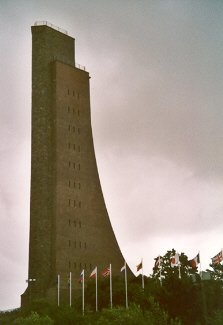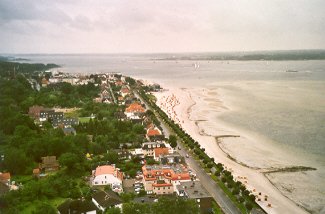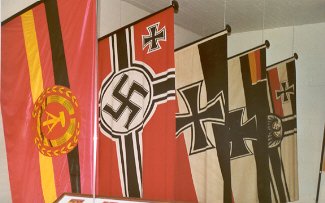Telephone: +49 (0)4343-8755
Website: http://www.deutscher-marinebund.de
Shop: no shop present
Restaurant/refreshments: not available
Size of the museum/site: medium
Year of visit: 2002
Overall rating:

Description: The building of the memorial started in 1927 and continued till 1936, after which a grand inauguration ceremony was held. It was erected to commemorate the fallen troops of the Imperial Marine in the First World War, later to be expanded to fallen seamen of all periods and nations. This becomes clear when you visit the memorial and gaze upon the vast collection of ceremonial banners and ribbons from navies and organisations from all over the world.
By climbing 341 steps (or by taking the elevator!) you will reach the top of the memorial, which provides a magnificent view of the German inland, the sea, the beaches and last-but-not-least, the U-boat (U 995 which can also be visited) lying some 85 metres below you.
Apart from the massive tower with observation platform and the actual memorial hall, the complex includes various exhibition rooms and a 'history hall', containing lots of scale models, maps and information on the evolution of the German Navy. One of the highlights of the exhibition is the huge scale-model of the German battleship "Bismarck".
Another positive point is the well presented extensive background information (in German and English) accompanying the items on display.







